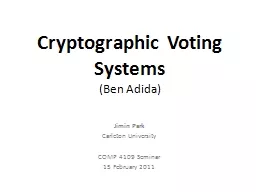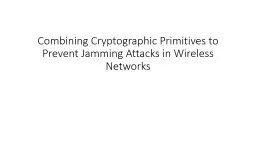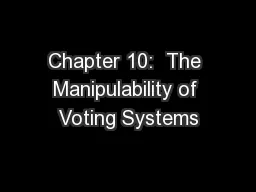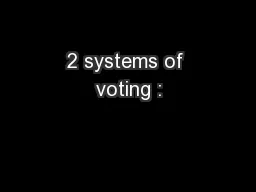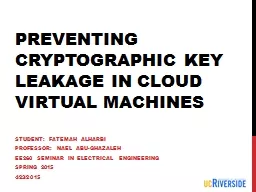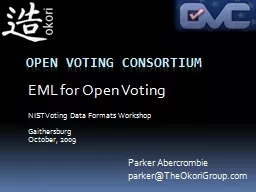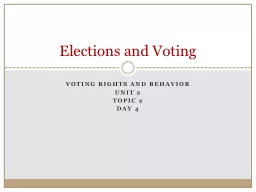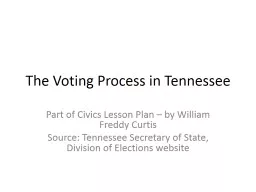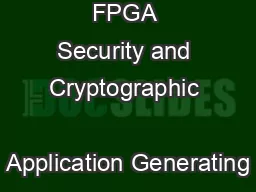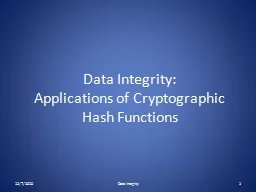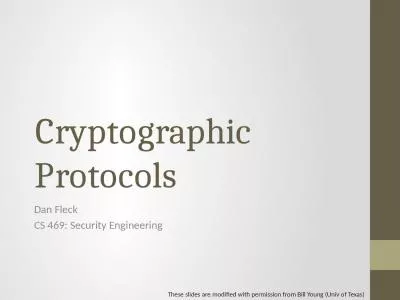PPT-Cryptographic Voting Systems
Author : tatiana-dople | Published Date : 2016-08-06
Ben Adida Jimin Park Carleton University COMP 4109 Seminar 15 February 2011 If you think cryptography is the solution to your problem then you dont understand
Presentation Embed Code
Download Presentation
Download Presentation The PPT/PDF document "Cryptographic Voting Systems" is the property of its rightful owner. Permission is granted to download and print the materials on this website for personal, non-commercial use only, and to display it on your personal computer provided you do not modify the materials and that you retain all copyright notices contained in the materials. By downloading content from our website, you accept the terms of this agreement.
Cryptographic Voting Systems: Transcript
Download Rules Of Document
"Cryptographic Voting Systems"The content belongs to its owner. You may download and print it for personal use, without modification, and keep all copyright notices. By downloading, you agree to these terms.
Related Documents

